EYELID AND EYE BAG SURGERY (BLEPHAROPLASTY)
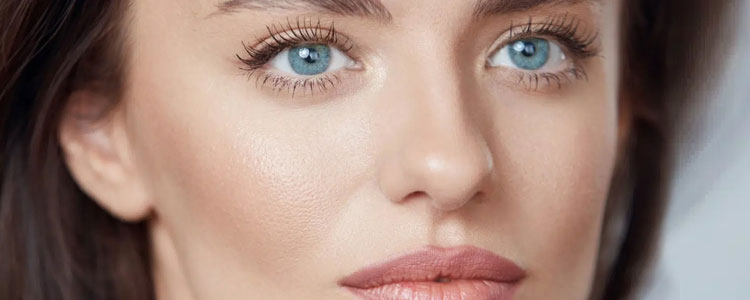
The normal process of aging also alters slowly across the area around the eyes: bags, wrinkles, and eyelids giving the impression of fatigue or sadness which also ages your face. In extreme cases, severe eyelid folds may reduce your vision.
Blepharoplasty removes the excess tissue that forms "bags" and excessive skin which then gives you a fresher youthful look The intervention may be limited to only the upper, lower eyelid, or both or it can be carried out in combination with other rejuvenation interventions such as lifting or facial rejuvenation (see chapters on).
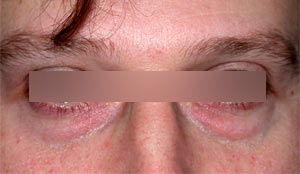
Before intervention
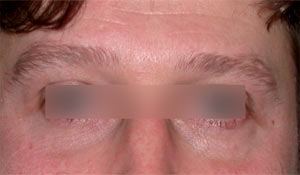
After intervention
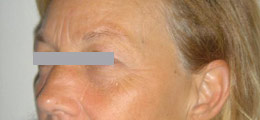
Before intervention
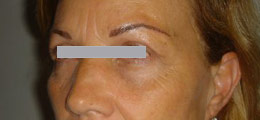
After intervention
What constitutes a blepharoplasty
During a blepharoplasty, the portion of excess skin around the higher or lower eyelid will be removed with a scalpel depending on the problem.
The amount of skin removed is measured with precision to get a symmetrical result on both eyes. The fat which is responsible for the bags under the eyes or upper level of the eyelid is gently removed if present. To eliminate wrinkle expressions a partial removal of the muscles around the orbits hyperplasici below the lower eyelid and the suspension of the margin outside the eye is made, in order to remove loose and excessive skin to avoid the so-called "wide open eye” typical of not well-done surgeries. In our daily practice is also recommended running a direct lifting of the eyebrow that gives more brightness to the eye.
Results Expected
After the intervention, a fine scar is left in the natural fold of the upper eyelid barely visible. The eye is wide open and brighter.
On the lower eyelid, a scar is confused as a very thin line on the edge of eyelashes as a part of the natural eye. The skin is relaxed but continues to form wrinkles during expressions like when smiling. The intervention does not affect the color or the thickness of the skin.
Anesthesia and recovery
If you want you can associate anesthesia with a sedative that will help you to relax until a state of drowsiness. Immediately after the intervention, you should have someone accompany you home.
For those who choose for personal reasons general anesthesia, you need to speak with the anesthetist the day before for necessary visits and recovery time.
Given that general anesthesia, it is always a higher risk.
Precautions before the intervention
To minimize risks and complications, follow all instructions given by your surgeon both before and after the procedure.
Communicate if you have ever suffered from allergies or other chronic diseases. If you bruise easily or if you bleed excessively in the case of small wounds, there may require some analysis to exclude difficulties of your blood to clot.
There are aspirin-type painkillers to be avoided during the two weeks before the intervention because their active ingredient interferes with blood clotting and can cause excessive bleeding. It is recommended to avoid all alcohol and sleeping pills.
Preparation
Before the treatment, it is necessary to visit an eye specialist to exclude any injury to the retina if any. Get the tablets and two or three small elements refrigerants.
Try to be rested, arrive without makeup, and bring a pair of dark sunglasses.
Intervention process
Regarding the treatment of the upper eyelid the technique used is always the external approach. Before the surgery, the surgeon marks with fine lines the incisions area to obtain optimum results. Then you go under local anesthesia to proceed to the removal of the excess skin with great delicacy and precision.
The excess fat that produces any in-aesthetic swelling is removed. If it’s necessary a partial section of the muscles around the orbits area is removed in order not to cause expression wrinkles. As for the lower lid, there are two main techniques that are the classic technique and the transcongiuntivale.
In the first case, external incisions are made for the upper eyelid, in the second case, with the technical transcongiuntivale, internal invisible incisions are made to the lower lid. With thin thread, we proceed to close the incisions in a way not externally visible.
The surgery lasts about 1-1.5 hours.
What happens after surgery
Immediately after the intervention, you should expect an accentuated swelling that will diminish after 1-2 days.
During these days, cover your eyes with moist compressors and cool with ice. You can remove any blood along the suture lines with wet cotton. Around the eyes will arise small oedema that will tend to disappear within a week.
The thread suture will be removed after about 5 days.
The scars will be reduced to thin lines, almost visible after about 8 days.
Possible complications
Bleeding is extremely rare but can result 1 or 2 days after the procedure.
After surgery, the lower eyelids may be, according to the size of the haematoma and to the healing process, slightly protruding and your eyes may tear. This risk is especially present in older patients and in patients who are having second eyelid surgery. If these symptoms do not fade away on their own within 6 weeks, the surgeon may choose to operate with a small correction.
In patients who have difficulty healing, the suture lines may appear reddened and rough for several weeks. In this case, the surgeon can recommend the appropriate treatment.
A slight dry eye after surgery is normal. If they were very red and irritated, see your ophthalmologist.
Precautions after surgery
Do not use creams or eye make-up during the week following the intervention.
To hide any bruising it's best to wear dark sunglasses.
